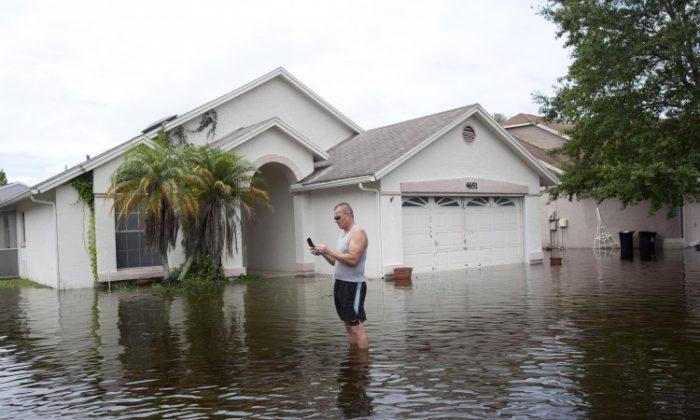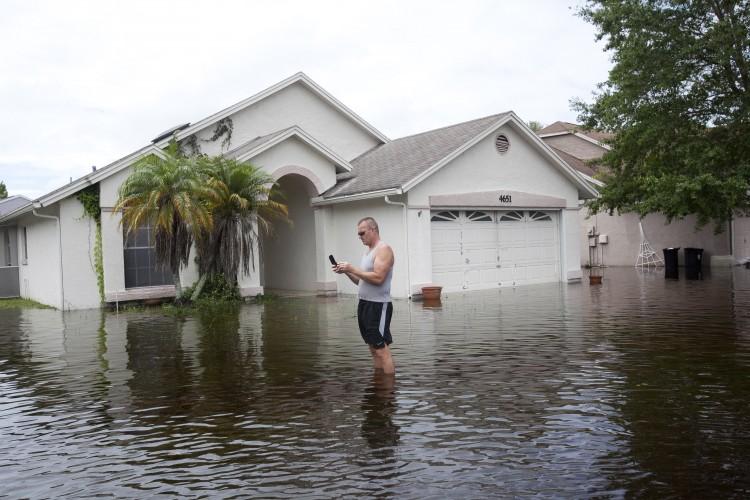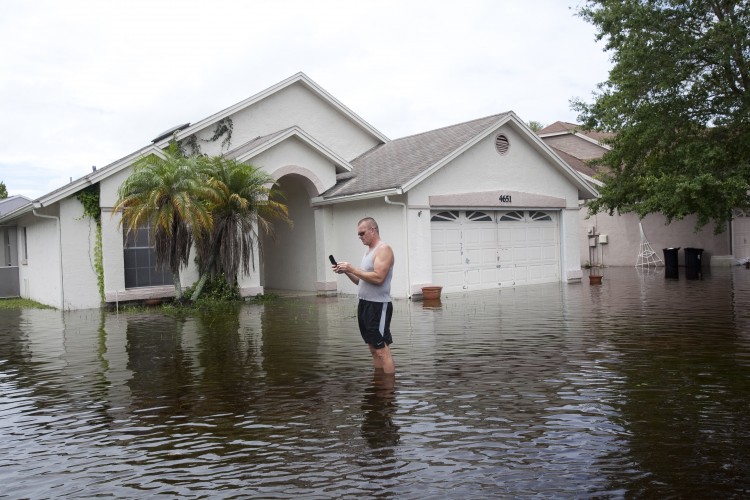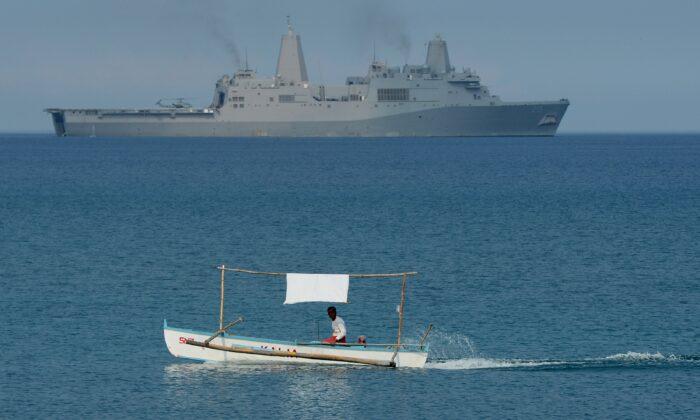Tropical Storm Debby, presently moving northeast up the Florida coast, has weakened but the threat to communities in Florida and southern Georgia is not over.
Unrelenting rain, big seas, and high tides continue to threaten the area after the storm left tens of thousands of people without power, shut down major highways, and created tornadoes that wreaked havoc in Central Florida over the weekend.
“Tropical Storm Debby threatens the state of Florida with a major disaster,” Florida Gov. Rick Scott said in a statement, declaring a state of emergency Tuesday. Gov. Scott said waves in the Gulf of Mexico could reach 15 feet, and warned of storm surges of up to 7 feet in Apalachee Bay and up to 4 feet along the Florida Gulf Coast.
A flash flood watch was in effect for most of the Florida Panhandle, as well as in the state’s northeast, west-central, and southwest regions, he said in the statement. President Obama called the Florida governor from Air Force One on Tuesday morning, offering support and to “ensure the state had no unmet needs,” the White House said in a statement.
Tropical Storm Debby was located about 70 miles west of Cedar Key, Fla., as of Tuesday afternoon and winds had dropped to 40 mph, the National Hurricane Center (NHC) reported.
The weakening, however, makes it no less dangerous. Wind intensity is only one of four components of a tropical storm, said NHC spokesperson, Dennis Feltgen. “Inland flooding, storm surges, and tornadoes,” can be just as damaging.
Feltgen said 20 tornadoes were reported in central and southern Florida on Sunday alone. Gov. Rick Scott has since called a tornado watch for 36 counties across the state.
One woman died and a child was badly injured as a result of a tornado in Venus, Fla., over the weekend, according to a press release from the Highlands County Sheriff’s Office.
Persistent rain is adding to the headaches for state emergency management. Potential falls of up to 10 inches of rain are predicted for the region over the next few days, according to Florida state emergency reports.
“They have just got a mess,” Feltgen said, estimating that damages will come in the millions of dollars.
Debby is the fourth storm that has developed in the region this season, making it a record to have four storms before July.
The National Oceanic and Atmospheric Administration (NOAA) has predicted an average hurricane season for the six months beginning June, but that may not be as reassuring as it sounds.
“Based on the period 1981–2010, an average season produces 12 named storms with six hurricanes, including three major hurricanes,” the NOAA reports on the website.
“It doesn’t matter if they say there are going to be one hundred storms out there, or there is going to be one—if that one hits you, it’s a really bad year,” Feltgen said.
Feltgen says it is impossible to predict too far in advance how many tropical storms will hit land and in which direction they may go. In that event, he said, “It is wise to be prepared.”
The Epoch Times publishes in 35 countries and in 19 languages. Subscribe to our e-newsletter.






